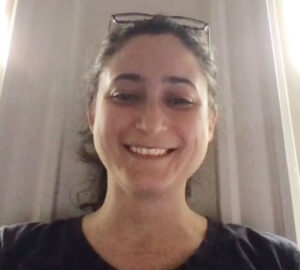Scientific progress has kept an unprecedented pace over the last year and a half. This is perhaps most evident in the near-miraculous development of several highly effective COVID-19 vaccines in under a year. In addition, innovation in viral detection methods has been accelerated by the pandemic response.
Although the gold standard for COVID-19 diagnostic testing—the reverse-transcription polymerase chain reaction (RT-PCR) assay—is already mature and highly optimized, its ancillaries in viral testing are still subject to improvement. Moreover, several such ancillaries are relevant not only to RT-PCR, but also to alternative assay technologies, such as those relying on next-generation sequencing (NGS).
Efforts to improve COVID-19 testing include, but are not limited to, the following activities:
1. decreasing the time needed to run a test, thereby providing results more quickly;
2. increasing the number of samples that can be run at one time;
3. maintaining high levels of sensitivity and specificity while making tests quicker and higher in throughput;
4. democratizing and reducing the costs of testing;
5. enhancing ease of use to enable at-home tests; and
6. multiplexing to allow testing for COVID-19 and other respiratory pathogens simultaneously.
As much of the world enters a new phase of the pandemic, with the ebb and flow of case counts being influenced by factors such as vaccination rates and emerging variants, testing will continue to be a critical component of the public health response.
Swabs are out, saliva is in
Most people who have had a COVID-19 test are familiar with the watery-eye-inducing, nose-tickling, swab-swirling method of sample collection. But this method has serious limitations. For example, it typically requires that the nasal swab be performed by a trained person, it permits variability in the amount of sample that is collected, and it depends on an adequate supply of swabs. To avoid these limitations (and others), researchers have sought alternative sampling methods. Some researchers, such as Anne Wyllie, PhD, associate research scientist, Epidemiology of Microbial Diseases, Yale School of Public Health, see promise in saliva.

Yale School of Public Health
Saliva is currently not a traditional sample type for clinical diagnoses, Wyllie notes, though it was frequently used in the early 1900s. “The advances that we have made through validation and optimization of saliva for SARS-CoV-2 detection,” she explains, “have highlighted the potential for alternative—and more tolerable—options than the traditional nasopharyngeal swab.”
But saliva samples cannot be simply swapped out for nasopharyngeal samples without other considerations. Saliva is a different sample than a swab, explains Wyllie. And the method used must be suitable for the sample. You wouldn’t apply a method that works for swabs to a urine, blood, or fecal sample and expect it to work, she notes.
Unfortunately, many labs apply a swab-based method to saliva samples. When the tests fail, the labs tend to blame the saliva sample. Wyllie asserts that instead of denigrating saliva testing, we “should be promoting the standardization of saliva testing.” Many methods have used saliva to advantage, and we need to start replicating those successes rather than allowing labs that don’t use saliva properly to fuel further doubt.
Many American labs are currently using saliva. Last year, Wyllie’s group, working with Nathan Grubaugh, PhD, associate professor at Yale School of Public Health, launched the SalivaDirect test. More recently, in April, New York’s Mount Sinai Health System announced the launch of the Mount Sinai COVID-19 PCR Saliva Testing program. In May, the Mount Sinai Health System and the Pershing Square Foundation announced the expansion of a saliva-based COVID-19 testing program in New York City public schools.

Some companies are trying to move saliva testing into the home. A startup called Vatic has put lateral flow technology at the center of its KnowNow antigen tests. Although the tests currently need to be administered by a trained healthcare professional, Vatic is exploring tests that could be performed in the home.
Will saliva testing be routine in the future? “I think it has amazing potential,” says Wyllie. It could change diagnostics in low-resource settings, she adds, and it could also provide a powerful screening tool for other diseases.
No PCR? No problem
Since the start of the pandemic, many labs have found a new utility for their previously developed technology in detecting viruses. For example, the lab led by Jussi Hepojoki, PhD, at the University of Helsinki built a COVID-19 test on a method the lab had previously developed, a method known as time-resolved Förster resonance energy transfer (TR-FRET). The method has been used for rapid homogeneous “mix and read” immunoassays to detect antibodies.
FRET occurs when two fluorophores (a donor and an acceptor) come in close proximity to each other. When that happens, the donor transfers energy to the acceptor, causing a photon to be emitted. In the COVID-19 assay, antibodies against the nucleoprotein (anti-NP) of the virus and antibodies against the spike protein of the SARS-CoV-2 virus, each labeled with a fluorophore, are mixed together with the clinical sample.

The antigen-based test has been shown to detect SARS-CoV-2 rapidly—in 10 minutes—and is estimated to be capable of analyzing as many as 500 samples in an hour. This method appeared in the journal mBio, in an article titled, “A Generic, Scalable, and Rapid Time-Resolved Förster Resonance Energy Transfer-Based Assay for Antigen Detection—SARS-CoV-2 as a Proof of Concept.” The article’s authors note that although SARS-CoV-2 was used to demonstrate proof of concept for the test, the principle could be applicable to test across a wide variety of infectious and perhaps also noninfectious diseases.
Sequencing samples with standards
NGS-based testing has taken a back seat to the RT-PCR test for COVID-19 diagnostics. However, innovative sequencing-based methods show promise for future testing. Last October, researchers at UCLA and Octant brought the genomic toolbox to SARS-CoV-2 testing by introducing SwabSeq. Combining NGS of pooled samples with sample-specific barcoding and standards, the test has been shown to work on nasal and saliva samples—without the need for RNA extraction.
SwabSeq adds a synthetic RNA standard to every sample. The standard’s sequence is nearly identical to the target in the virus genome, but different enough that it can be distinguished by sequencing. The detection of SARS-CoV-2 is based on the ratio of sequencing reads of the virus to those of the standard. This process eliminates error: if there is synthetic RNA but no SARS-CoV-2 RNA, the COVID-19 test is deemed to have worked (and to have provided a negative result); if there is no synthetic RNA or SARS-CoV-2 RNA, the test is deemed to have failed.
With SwabSeq, it is possible to test thousands of samples in a single run. In July, SwabSeq’s high-throughput nature was described in Nature Biomedical Engineering, in a paper entitled, “Massively scaled-up testing for SARS-CoV-2 RNA via next-generation sequencing of pooled and barcoded nasal and saliva samples.” According to this paper, SwabSeq was used to perform 80,000 tests, with sensitivity and specificity comparable to (or better than) RT-PCR.
CRISPR gets electric
Researchers at the Wyss Institute at Harvard Medical School have innovated more than one way to detect COVID-19 over the past year. For example, a program to create wearable sensors, by embedding synthetic biology reactions into fabrics, produced a facemask that detects SARS-CoV-2 using CRISPR-based SHERLOCK (Specific High-Sensitivity Reporter unLOCKing) technology. The technology can work with any facemask to identify the virus in a person’s breath with high accuracy.

Wyss Institute
Another group at the Wyss is working to detect the virus using CRISPR—by converting the standard optical readout to an electrochemical one. This work is being done by Pawan Jolly, PhD, senior staff scientist I, in the lab of Don Ingber, MD, PhD, Wyss’s founding director, and Helena de Puig Guixe, PhD, a postdoctoral fellow in the lab of James J. Collins, PhD, founding core faculty at the Wyss Institute.
Before COVID-19, the team had developed the eRapid technology. At eRapid’s core is a fouling-resistant, affinity-based platform of multiplexed, electrochemical sensors. The proprietary coating is the key, Jolly tells GEN, because it enables detection in complex samples without any sample preparation. In general, the problem with electrochemical sensors is biofouling. If blood is being assayed, there are many molecules that nonspecifically bind to the surface, which makes detection challenging. The eRapid platform prevents the nonspecific binding.

Wyss Institute
Since COVID-19, they have been working to develop the eRapid technology to detect nucleic acids, like the genome of SARS-CoV-2. For that, they turned to CRISPR. But CRISPR detection assays are typically an optical readout, performed either by fluorescence or lateral flow assays. Jolly and de Puig Guixe are using electrical current instead. The advantages of a test with an electrochemical readout are that it is cheap and easily miniaturized, that it requires minimal instrumentation, that it is scalable and capable of multiplexing, and that it needs only small volumes.
The CRISPR-based COVID-19 diagnostic harnesses the Cas12a-based detection system, but instead of reading the reporter as a fluorophore, the reporter probe is modified with a tag that is electrochemically active. If the virus is present, the Cas12a enzyme cleaves the reporter, removing the electrochemically active tag, and no signal will be present. In this assay, the absence of reporter indicates the presence of the virus.

Jolly states that a benefit to this approach is its built-in validation. In other systems, the absence of virus is indicated by the absence of signal. But Jolly notes that a lack of signal could indicate that an assay has failed. The built-in validation in Wyss team’s system ensures that the assay is working because signal is seen even in the absence of the virus. This system has been validated for use on saliva samples for the detection of SARS-CoV-2—work that has been submitted for publication.
The faster the better
The pace of COVID-19 testing has improved over the past 18 months. At the beginning of the pandemic, it was not unusual to wait up to a week for results. More recently, the expected wait time has fallen to 24 hours. Some antigen tests can give a result in minutes. But a new test, developed at the University of Nevada, is even faster, giving a result in just 30 seconds.
The test uses a nanotube-based electrochemical biosensor and is based on technology that Mano Misra, PhD, professor in the Chemical and Materials Engineering Department, previously developed to detect tuberculosis. The biosensor, which incorporates cobalt-functionalized TiO2 nanotubes (Co-TNTs), detects the receptor binding domain of SARS-CoV-2’s spike protein. According to an article in the journal Sensors, the test consists of a one-step, ultra-fast procedure that can be run at low cost.
With recent news of the surges in cases caused by the Delta variant, the need for routine COVID-19 testing is certain to be a staple of public health for some time. The most advanced testing technologies in development are intended to counter the current pandemic. However, they may not be widely implemented before the pandemic wanes. Regardless, they may be ready by the time we face the rise of a new outbreak or pandemic. The ability to have fast and effective testing at the ready—as the first cases of a new infectious disease are reported—could be the difference between a small cluster of cases and a global pandemic.

